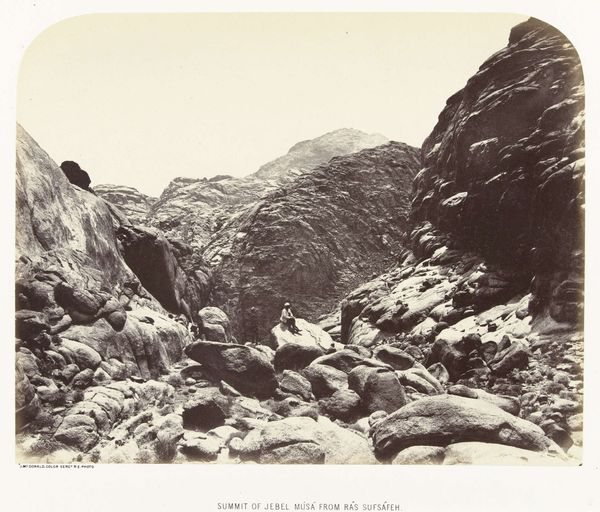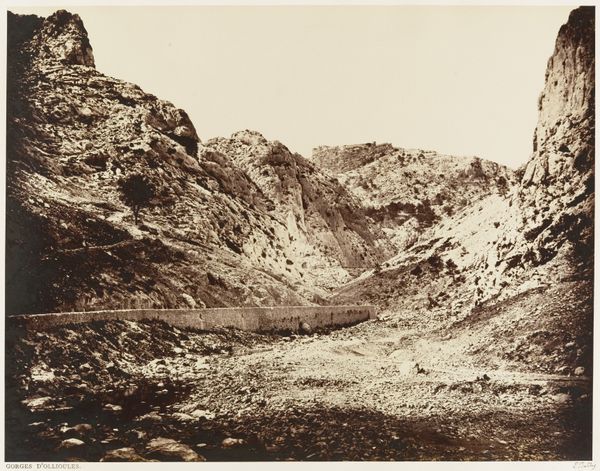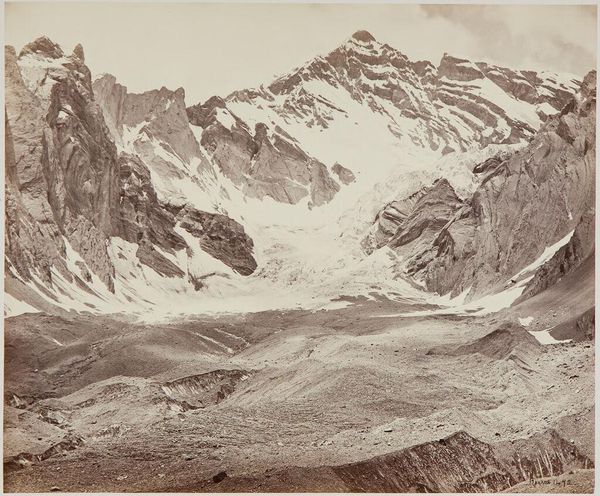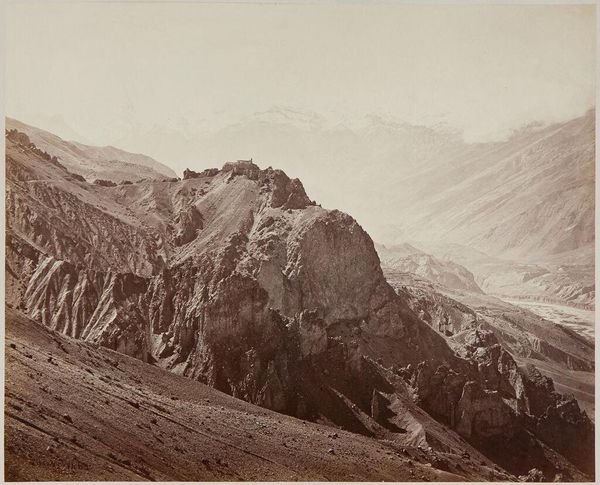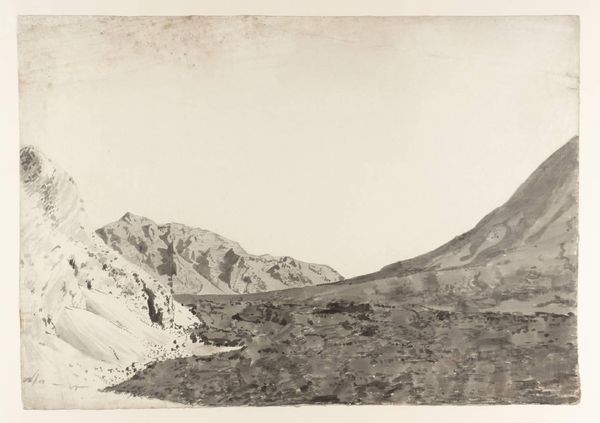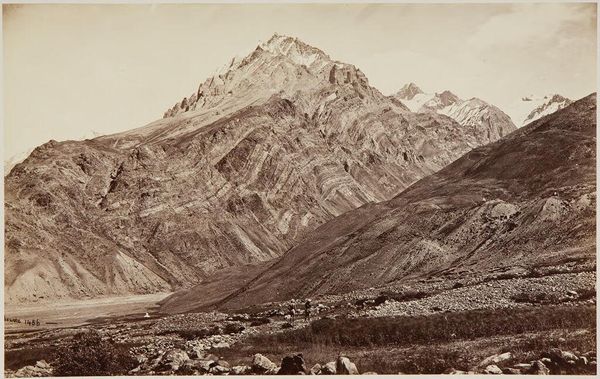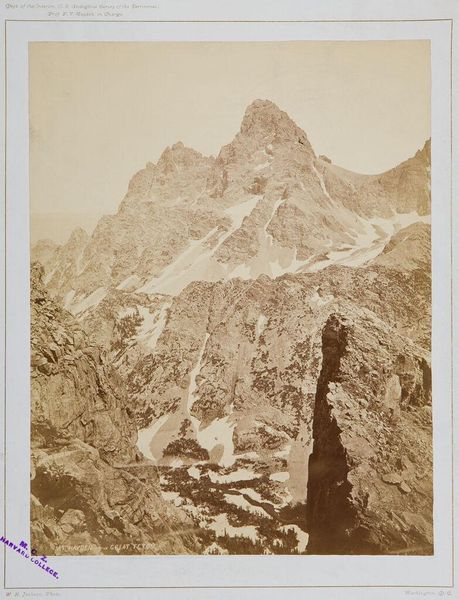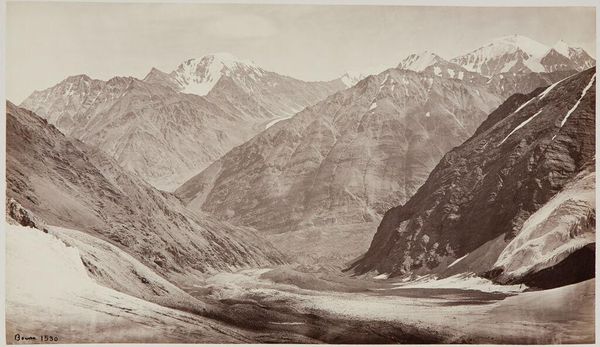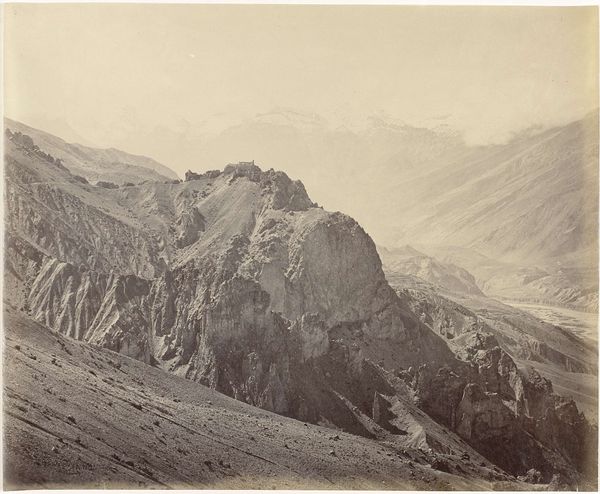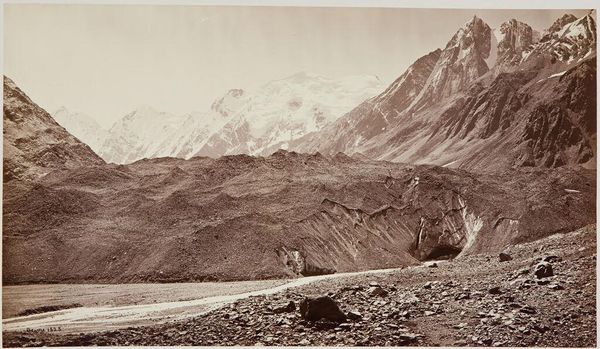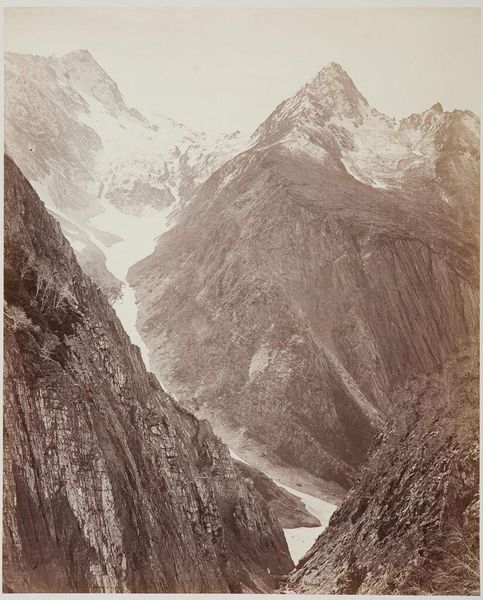
Buspa Valley, Gangootri; The Source of the Ganges, Ice Cave at Foot of the Glacier c. 1867
0:00
0:00
Dimensions: image: 23.2 x 29 cm (9 1/8 x 11 7/16 in.) mount: 45.8 x 55.8 cm (18 1/16 x 21 15/16 in.)
Copyright: CC0 1.0
Editor: This photograph by Samuel Bourne, titled "Buspa Valley, Gangootri; The Source of the Ganges, Ice Cave at Foot of the Glacier," depicts an almost surreal landscape. It feels both majestic and desolate. What do you see in this piece? Curator: I see a visual document deeply embedded in the colonial gaze. Bourne, a British photographer, captured this landscape not merely as scenery, but as a claim to territory. Consider how photography itself was used as a tool of empire, defining and possessing through representation. How does viewing it through this lens change your perspective? Editor: It makes me consider the power dynamics inherent in landscape photography of that era. I hadn’t thought about it as an act of claiming space. Curator: Exactly. And what does it mean to depict the source of the Ganges, a sacred site, through a Western lens, potentially stripping it of its spiritual context? Editor: That’s a really important point. I'll definitely carry this perspective as I continue to study art history. Curator: It is crucial to understand how art and power intersect, revealing the complex narratives behind even the most seemingly straightforward images.
Comments
No comments
Be the first to comment and join the conversation on the ultimate creative platform.
